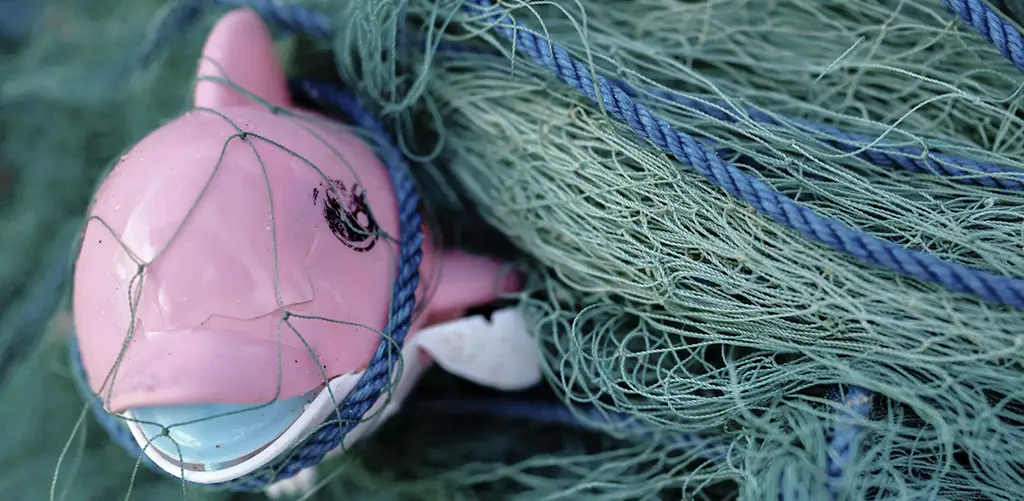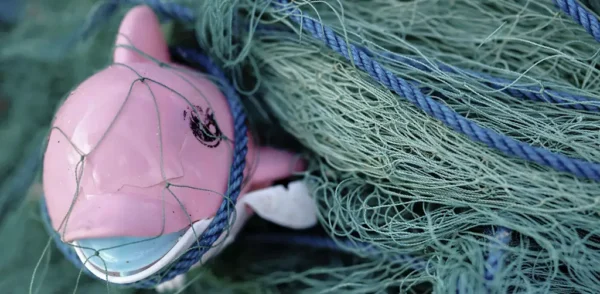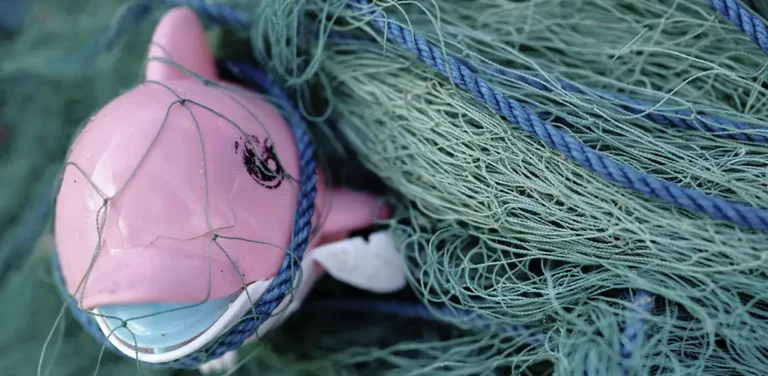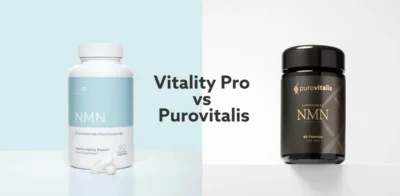
Microplastics are everywhere—in our water, food, and even the air we breathe. These tiny particles have become an unavoidable part of modern life and raise serious concerns about their effects on human health. How do they impact the body, and what can you do about it?
What are microplastics?
Microplastics are tiny plastic particles originating from degraded plastic waste, cosmetics, and industrial processes. They measure between 0.1 micrometers and 5 millimeters and have become a widespread source of pollution in nature. These particles are found everywhere – in oceans, soil, food, and even drinking water. Research has detected microplastics in human blood, placentas, and feces, raising concerns about their potential health effects.
Microplastics can enter the body through the food we eat and the air we breathe. They are not biodegradable, making them a persistent and growing problem for both the environment and human health.
Both an environmental and health concern
Microplastics pose a serious threat to both the environment and human health. In nature, they disrupt marine ecosystems as fish and other sea creatures often mistake them for food. This can damage the animals’ digestive systems, lead to starvation or death, and disrupt the food chain.
For humans and other living creatures, microplastics can enter the body through food, drinking water, and air. Scientists fear that they may accumulate in organs and cause inflammation, hormonal disruptions, or other health issues. While the long-term effects are not yet fully understood, their ability to carry toxic substances highlights a hidden threat to human health.
The persistent presence of microplastics in the environment and their potential harmful effects on the body underscore their role as a significant global issue.
WHO calls for action on microplastics
In 2019, the World Health Organization (WHO) emphasized the urgent need for more research into microplastics and their potential health effects. Dr. Maria Neira, Director of Public Health, Environment, and Social Determinants of Health at WHO, stated:
“We urgently need to know more about the health impact of microplastics because they are everywhere – including in our drinking-water. Based on the limited information we have, microplastics in drinking water don’t appear to pose a health risk at current levels. But we need to find out more. We also need to stop the rise in plastic pollution worldwide.”
WHO also called for global efforts to reduce plastic pollution to benefit both the environment and human health.
How microplastics affect our health
Microplastics can affect various systems in our bodies, including hormonal balance, the immune system, and the digestive system. When microplastics accumulate in the body, they can lead to health problems such as increased inflammation and cellular damage. Long-term exposure to these particles may result in serious health consequences and affect our overall well-being, including aging and reproductive health.
Microplastics and aging
Microplastics may accelerate the aging process by increasing oxidative stress in the body. Oxidative stress occurs when free radicals accumulate, causing damage to cells and tissues. This damage can particularly affect mitochondrial function, which is responsible for energy production in cells. When mitochondrial function is impaired, it can lead to age-related diseases and reduced physical function. Therefore, microplastics may contribute to faster aging by increasing oxidative stress and impairing the body’s ability to regenerate cells (Lee et al., 2024).
Microplastics and reproductive health
Research has shown that microplastics can negatively impact reproductive health. A 2024 study on male mice revealed that microplastic exposure could reduce sperm quality and cause mitochondrial damage in sperm cells. The oxidative stress caused by microplastics may also disrupt hormonal balance, leading to decreased fertility. Since microplastics can affect both genders, it is concerning that they could contribute to fertility issues and reproductive problems.
Read more about this study here: New study: Microplastics impact on male reproductive health.
Long-term health implications
The long-term health effects of microplastics are still under investigation, but early findings raise significant concerns. Microplastics can accumulate in organs and tissues, potentially leading to chronic inflammation, oxidative stress, and tissue damage. While research is still in its early stages, some studies suggest that microplastics may contribute to various health conditions, including endocrine disruption and immune system alterations. Vulnerable populations, such as children, pregnant women, and the elderly, may be at higher risk, as their systems are more susceptible to damage caused by microplastic exposure (Li et al., 2024).
How to get microplastics out of your body
Although it is difficult to remove microplastics directly from the body, you can support the body’s natural detoxification processes by adopting certain habits that help reduce the impact and promote detox:
| Strategy | Description |
|---|---|
| Drink plenty of water | Supports kidney function to filter out waste, including microplastics. Aim for 1.5–2 liters daily. |
| Eat fiber | Promotes digestion and helps eliminate waste, including microplastics. |
| Add antioxidants | Fight free radicals caused by microplastics and support the body’s healing. |
| Be active and sweat | Physical activity helps expel toxins, including microplastics, through sweat. |
| Use detox methods | Methods like fasting, juice cleanses, and spirulina can help eliminate microplastics. |
| Support gut health | Probiotics and fiber help the digestive system process toxins, including microplastics. |
How to avoid microplastics
Now that we understand the many consequences of microplastics, here’s what you can do to reduce your daily exposure. These practical tips are better for both your health and the environment:
Replace common plastic items like this:
| Replace this | With this | Why it’s better |
|---|---|---|
| Plastic food storage containers | Glass or stainless steel containers | Avoids hormone-disrupting chemicals like BPA. |
| Plastic cutting boards | Cutting boards made of bamboo or wood | Prevents small plastic particles from breaking into your food. |
| Non-stick pans (Teflon) | Stainless steel or cast iron pans | Avoids toxic chemicals released by Teflon coatings when heated. |
| Aluminum foil | Baking paper or reusable lids | Prevents aluminum transfer into food. |
| Plastic bags | Reusable fabric bags | Reduces single-use plastic contamination. |
| Plastic bottles | Glass or stainless steel bottles | Reduces microplastics and chemicals leaching into liquids. |
Additional steps to reduce microplastic exposure
- Drink tap water: Bottled water often contains more microplastics due to packaging and bottling processes.
- Use glass baby bottles: Warm liquids in plastic bottles can release microplastics; glass is a safer option for infants.
- Check personal care products: Many cosmetics and creams include microplastics. Read labels and avoid ingredients like polymers or crosspolymers.
- Avoid plastic tea bags: Opt for metal infusers or paper filters to avoid microplastics released during steeping.
- Bring reusable cups: Disposable coffee cups are often lined with plastic, which can leach into hot beverages.
- Ventilate and clean regularly: Microplastics from dust, carpets, and furniture circulate indoors. Proper ventilation and cleaning help reduce exposure.
- Choose plastic-free cleaning tools: Switch to biodegradable or reusable sponges and cloths to prevent shedding plastic particles.
Small changes in daily life can reduce the amount of microplastics you and your family are exposed to. Additionally, choosing food and products free of unnecessary plastic packaging is important.
How to avoid microplastics in your clothing
| Instead of this | Use this | Why it’s better |
| Synthetic fabrics (polyester, fleece) | Natural fibers like cotton, wool, or linen | Natural fibers shed fewer microplastics into the environment. |
| Washing synthetic clothes frequently | Wash synthetic clothes less often and only when necessary | Reduces fiber shedding and extends garment life. |
| Using tumble dryers | Air-dry clothes | Avoids fiber damage and shedding caused by machine drying. |
| Low-quality clothing | Invest in durable, high-quality garments | High-quality items shed fewer fibers and last longer. |
Conclusion
By implementing these strategies, you can reduce the release of microplastics from your wardrobe while making environmentally friendly choices. Reducing exposure to microplastics is not about achieving perfection but taking meaningful, manageable steps in our daily lives. Small actions, such as choosing reusable containers, switching to natural fibers, or improving indoor air quality, can make a substantial difference over time. These changes not only safeguard your health but also help decrease the demand for plastics, contributing to a cleaner environment and a more sustainable future.
It’s important to remember that addressing microplastics isn’t just a personal responsibility. Governments, industries, and communities all play a role in reducing plastic pollution and promoting alternatives. By making conscious choices, supporting sustainable practices, and spreading awareness, we can collectively work towards mitigating the impact of microplastics on our health and planet. Every small change adds up, creating ripples that lead to broader, systemic transformations for a healthier world.
References:
1.Jin, H., Xue, B., Chen, X., Ma, T., Ma, Y., Zou, H., Zhu, J., Tong, X., Song, R., Meng, W., & Liu, Z. (2025). Polystyrene microplastics induced spermatogenesis disorder via disrupting mitochondrial function through the regulation of the Sirt1-Pgc1α signaling pathway in male mice. Environmental Pollution, 364(Part 2), 125364. https://doi.org/10.1016/j.envpol.2024.125364
2.Leslie, H. A., van Velzen, M. J. M., Brandsma, S. H., Vethaak, A. D., Garcia-Vallejo, J. J., & Lamoree, M. H. (2022). Discovery and quantification of plastic particle pollution in human blood. Environment International, 163, 107199. https://doi.org/10.1016/j.envint.2022.107199
3.Ragusa, A., Svelato, A., Santacroce, C., Catalano, P., Notarstefano, V., Carnevali, O., Papa, F., Rongioletti, M. C. A., Baiocco, F., Draghi, S., D’Amore, E., Rinaldo, D., Matta, M., & Giorgini, E. (2021). Plasticenta: First evidence of microplastics in human placenta. Environment International, 146, 106274. https://doi.org/10.1016/j.envint.2020.106274
4.Zhang, N., Li, Y. B., He, H. R., Zhang, J. F., & Ma, G. S. (2021). You are what you eat: Microplastics in the feces of young men living in Beijing. Science of the Total Environment, 767, 144345. https://doi.org/10.1016/j.scitotenv.2020.144345
5. Lee, S. E., Yi, Y., Moon, S., Yoon, H., & Park, Y. S. (2022). Impact of micro- and nanoplastics on mitochondria. Metabolites, 12(10), 897. https://doi.org/10.3390/metabo12100897
6.Li, Y., Chen, L., Zhou, N., Chen, Y., Ling, Z., & Xiang, P. (2024). Microplastics and their implications for human health: A comprehensive review. Environmental Health Perspectives, 132(1), 012345. https://doi.org/10.xxxx/ehp.2024.12345

Track 50+ health metrics with AI-powered accuracy. Start your free trial today and take control of your wellness journey!

premium supplements Liposomal Technology made in EU Third party lab tested
Experience life to its fullest because you deserve the best! Try Purovitalis supplements!












